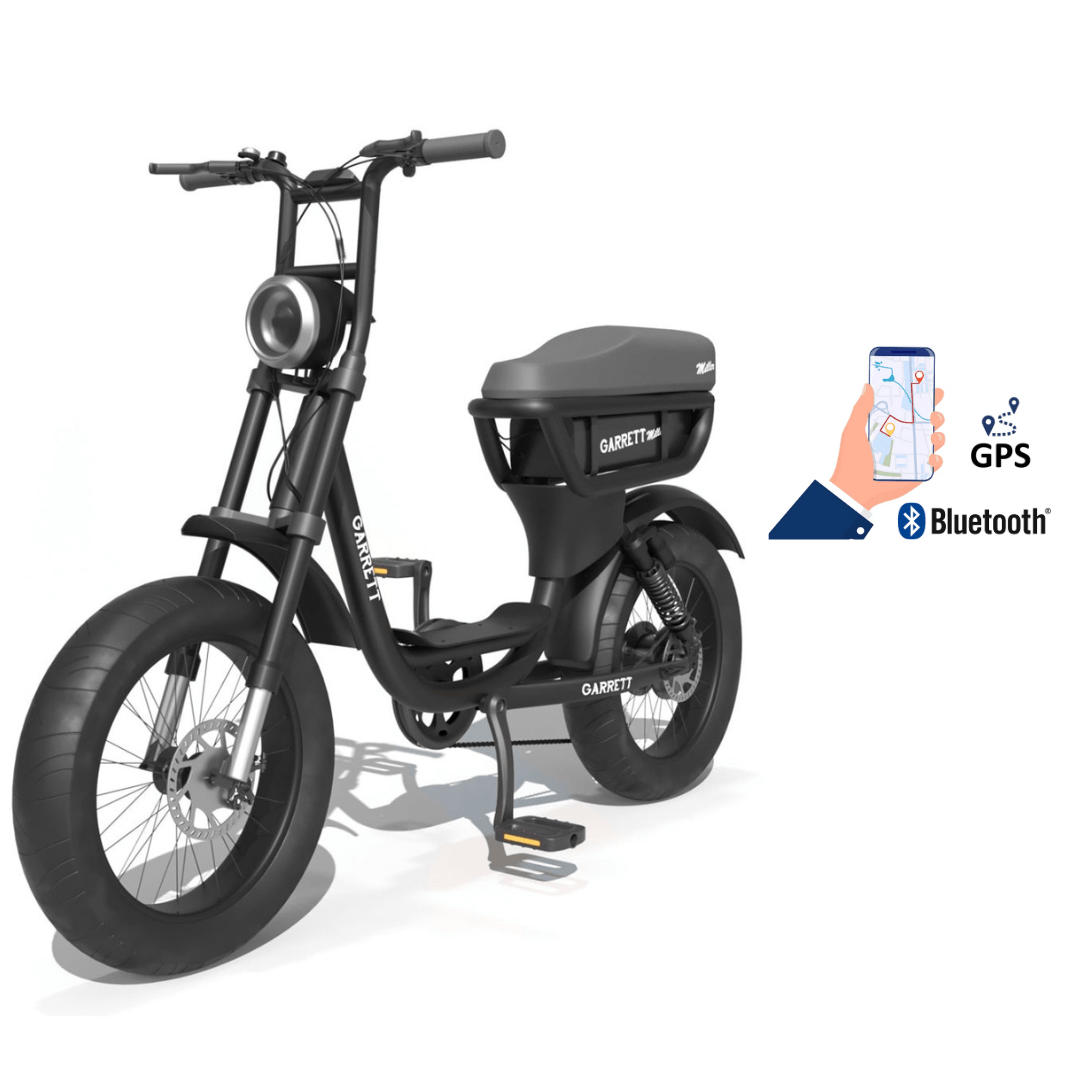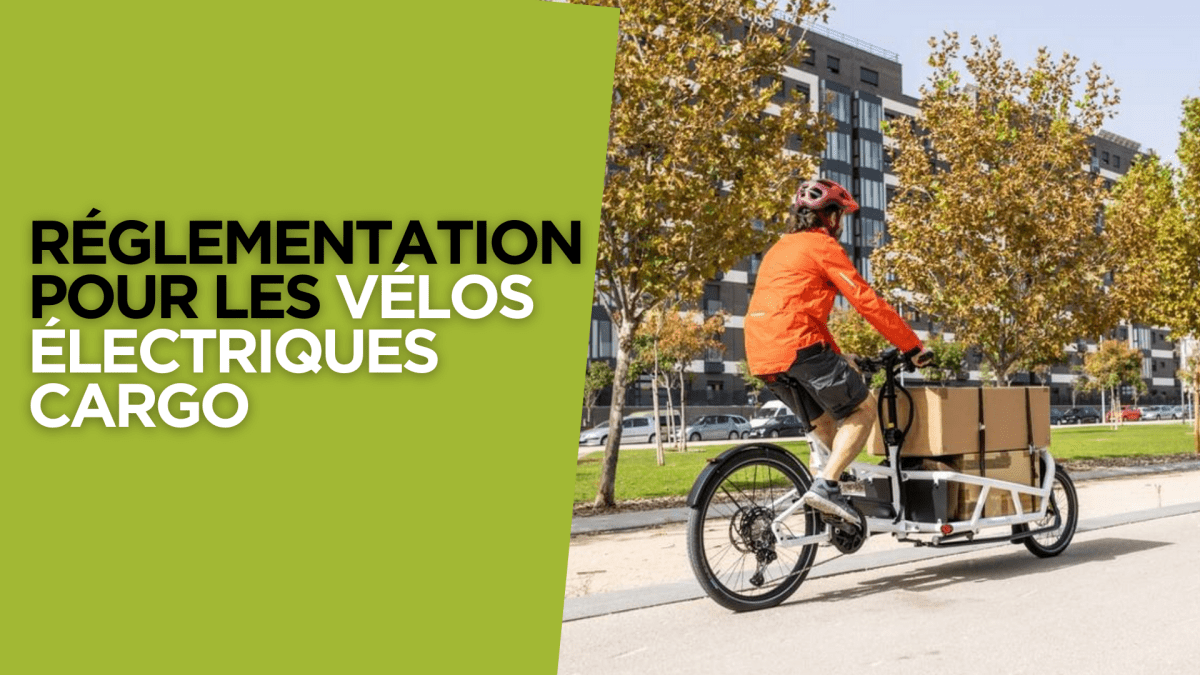Electric bikes have seen a real boom in recent years. They can be found in all major cities where they are establishing themselves as a practical and eco-friendly alternative to thermal vehicles. Capable of transporting children and heavy loads, they mainly cater to large families and professionals. In light of this enthusiasm, authorities have no choice but to implement specific regulations aimed at governing their use in urban areas.
In this article, we will discover its new regulations for cargo electric bikes.
What is a cargo electric bike?
Cargo electric bikes are gradually taking over our roads. Today used to transport our children or to deliver our packages, cargo electric bikes are a true ally for families and merchants.
Definition and characteristics
The electric cargo bike is a true revolution in the field of green mobility. Designed to transport passengers or heavy and bulky loads, it makes pedaling easier thanks to its electric motorization, even over long distances or on steep slopes. On average, cargo bikes can support maximum loads of 200 kg. Some models are equipped with a platform at the front, while others have an integrated trailer at the back, allowing them to adapt to different needs without losing maneuverability.
Compared to a classic electric bike, the cargo bike is bulkier and offers better stability. Its motor is generally more powerful to compensate for the extra weight, and its large range is perfectly suited for extended use. All these features make it an ideal choice for large families and professionals looking for a practical and eco-friendly alternative to thermal vehicles.

The most common uses
For large families, the electric cargo bike represents an effective solution for transporting children safely. Equipped with approved seats and seat belts, it allows parents to make daily trips, such as dropping the kids off at school, taking them for a walk in a park, or doing the shopping, all while enjoying a practical and eco-friendly vehicle.
On the professional side, the electric cargo bike is highly valued for its large loading capacity, making it practical for delivering goods in urban areas. Concerned about the environment, many committed companies are betting on this type of bike to transport packages without being affected by traffic restrictions or low emission zones (LEZ).
Finally, the electric cargo bike is perfectly suited for environmentally conscious individuals. It is an ideal alternative to cars, especially for short or medium-distance trips, while reducing its carbon footprint and saving on fuel costs.
Electric cargo bike: growing popularity and several legislative challenges
The global cargo electric bike market has been accelerating for several years and is expected to grow at a CAGR of 3% until 2032. In Europe alone, between 400,000 and 500,000 models were sold in 2022. It is undeniable that cargo electric bikes meet a growing demand for mobility in increasingly urbanized environments.
Their popularity is also due to the rise in living standards and global environmental awareness. In France, the cargo electric bike market is very dynamic, with a market share multiplied by 9 and more than 35,000 units sold in 2023.
It is therefore clear that their success is not a coincidence. As has been said, it is driven by a collective awareness of climate issues and by sustainable mobility policies implemented in many cities. Not to mention the purchase subsidies and local initiatives that have helped make this type of bicycle accessible to the greatest number.
However, this increase in popularity also raises important regulatory questions. Cities must adapt their infrastructures to accommodate these large bicycles, particularly by widening bike lanes or creating specific parking areas. The implementation of stricter safety standards is necessary to ensure harmonious coexistence with other road users.
The new regulations for cargo electric bikes in 2025
The recent Babboe case has somewhat accelerated the establishment of the EN 17 860 standard dedicated to cargo bikes. These standards actually began in 2017. Among the tests, there is a differentiation between domestic use and commercial use. This is where the problem lies, as the boundary between the two sometimes does not exist. Moreover, the market of 1.88 billion euros in 2024 is expected to reach 2.73 billion in 2029. Hence the importance of the rapid implementation of these specific standards.

Maximum allowed power and speed
In 2025, regulations regarding cargo electric bikes are tightening to ensure better safety on the roads. Today, the power of the motors is limited to 250W so that they remain suitable for urban traffic. The same goes for electric assistance, which cannot exceed a speed of 25 km/h, limiting the risks of accidents in shared spaces with pedestrians.
Non-compliant bicycles will face consequences that can be severe. Cyclists risk fines, or even a ban on riding in certain areas. However, a few exceptions remain. Models intended for commercial use or approved for specific uses may have special authorizations, provided they meet specific conditions.
The mandatory equipment to be compliant
The safety of cyclists is at the heart of the new requirements for cargo electric bikes. In terms of active safety, each bike must be equipped with front and rear lighting, reflectors, and an effective horn.
If you need to transport your children or heavy loads, passive safety is enhanced: appropriate braking, mandatory helmet use for children under 12 years old, and proper seat belts are required. If you need to ride outside built-up areas, at night, or when visibility is reduced, wearing a reflective vest is also mandatory for the cyclist and their passengers.

Finally, for professionals using cargo electric bikes for deliveries, registration or a unique marking is required. This allows for tracking their usage and ensuring better compliance with current regulations.
Traffic rules in urban areas
Access regulations for bike paths are also clarified for 2025. Cargo electric bikes must meet specific dimensions to be allowed on these paths. If they exceed the limits, they will have to ride on the roadway, alongside other motorized vehicles.
In pedestrian areas and city centers, specific restrictions apply. For professionals, delivery times may be regulated to avoid peak hours. These measures aim to ensure a peaceful coexistence among road users while promoting clearer logistics.


Comparison with the regulations of previous years
To fully understand the new regulations established for 2025, it is necessary to compare them with those of previous years. This will put you in the context of the time and help you grasp the real motivations of the lawmakers regarding these new rules.

Return to the rules in effect before 2025
Before 2025, cargo electric bikes operated under a more flexible legislative framework, inherited from the general regulations on classic electric bikes. While this flexibility allowed for a rapid adoption of regulations, it left many gray areas.
For example, there were no specific standards regarding the framing of models designed to transport heavy loads or passengers. Furthermore, safety equipment requirements were limited, which could lead to risky situations, particularly in very densely populated urban areas.
The lack of clear guidelines also made it difficult to integrate cargo electric bikes into existing infrastructures, such as bike paths that are often unsuitable for their size.
Major developments in 2025
The new regulations of 2025 mark a clear break from previous years. The introduction of specific standards for cargo electric bikes reflects a desire to ensure both user safety and better regulation in urban environments. Strict restrictions on motor power and assisted speed aim to prevent abuse and avoid accidents.
Furthermore, the requirement to have suitable equipment and safety devices for the transport of passengers and goods meets the needs of large families and professionals. The new rules, such as unique marking or registration, promote traceability and better control of vehicles in circulation.
State aid and subsidies for the purchase of your cargo electric bike in 2025
If you are considering switching to an electric cargo bike in 2025, now is the perfect time to take advantage of the many grants offered by the State. Here’s everything you need to know about the available grants this year, the conditions to meet, and why the State supports this type of transition.

Purchase of a cargo electric bike: What assistance is offered in 2025?
In 2025, the State strengthened subsidies for the purchase of a cargo electric bike, in order to promote more environmentally friendly modes of transport and support the energy transition. These aids are part of the sustainable mobility plan defined in the Climate and Resilience Law (2021), which aims to reduce the carbon footprint of the transport sector.
Individuals can benefit from assistance of up to €2,000 for the purchase of a cargo electric bike, depending on the criteria for the aid (geographical area, type of bike, etc.). Professionals, on the other hand, can obtain an even larger grant, which can reach €3,000, for the acquisition of bikes intended for commercial use (delivery, transport of goods).
This aid is governed by ministerial decrees such as that of May 7, 2022, which specifies the terms of application for subsidies for clean vehicles.
Why does the State offer these aids?
The objective of this aid is clear: to encourage the reduction of CO2 emissions, reduce congestion in cities, and promote more sustainable transport solutions.
By offering these grants, the State aims to make the purchase of cargo electric bikes more affordable, while contributing to better air quality in urban areas. This is part of the national low-carbon strategy (SNCB) adopted by France under European climate commitments, notably the Climate and Resilience law which imposes significant reductions in emissions from the transport sector by 2030.
Electric cargo bikes are an ideal alternative to thermal vehicles, particularly for short trips or urban deliveries, where traffic restrictions and low emission zones (LEZ) are becoming increasingly common.
Until when can you enjoy it?
Subsidies for cargo electric bikes will be available in 2025, but be careful, they are often allocated within the limits of funds allocated by the State and regional schemes. It is therefore advisable to quickly inquire about the eligibility criteria and to submit your application as soon as possible, as budgets may be limited and assistance is not guaranteed throughout the year.
Requests must be made within the framework of the energy transition support mechanisms, which are subject to regular oversight by the Agency for Ecological Transition (ADEME). For individuals, requests can be made until the end of 2025, but it is better to act quickly to avoid missing the opportunity.
What are the conditions to benefit from it?
To benefit from these aids, there are a few conditions to be met.
Compliance
Your bicycle must comply with European safety standards and meet the performance criteria for the year 2025. For example, the motor power must be limited to 250W, and the maximum assisted speed must not exceed 25 km/h, in accordance with European regulations on mopeds (Regulation 168/2013/EU). This compliance ensures that cargo electric bicycles remain safe for users and suitable for urban traffic.
Income and location
Then, the aids are often subject to income or location criteria. For example, if you live in a densely populated urban area or in a low-emission zone, you may be eligible for a higher amount. Similarly, professionals will need to prove the use of their bicycle for professional activities such as delivery or the transport of goods, in accordance with the legislative texts related to urban logistics and low-emission zones (LEZ).
Purchase from an authorized dealer
Finally, to benefit from the aid, you will need to purchase a bicycle from an authorized dealer that meets the subsidy criteria defined in decree n°2021-1193 of September 15, 2021, on low-emission vehicles. Remember that certain models of cargo bikes, particularly those intended for commercial use, may be subject to specific conditions regarding registration or unique marking.
Conclusion
The new regulations implemented for 2025 govern the use of cargo electric bikes, providing a safe environment for all road users. As a user, you must ensure that your equipment is compliant and adopt practices that respect the legislation to fully enjoy the benefits of the cargo electric bike.
If you feel ready to embark on the electric cargo bike adventure, take a look at our Weebot shop. We will help you choose the model that suits your needs and expectations. And don't forget, you can take advantage of state aids and subsidies for the purchase of your electric cargo bike. Don't hesitate to apply to save money.

